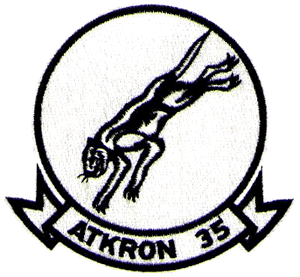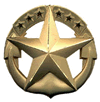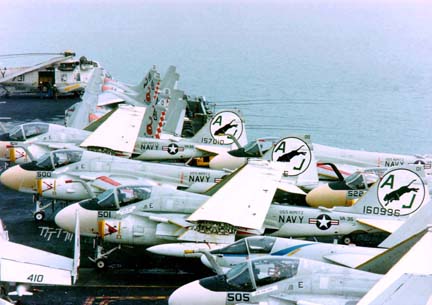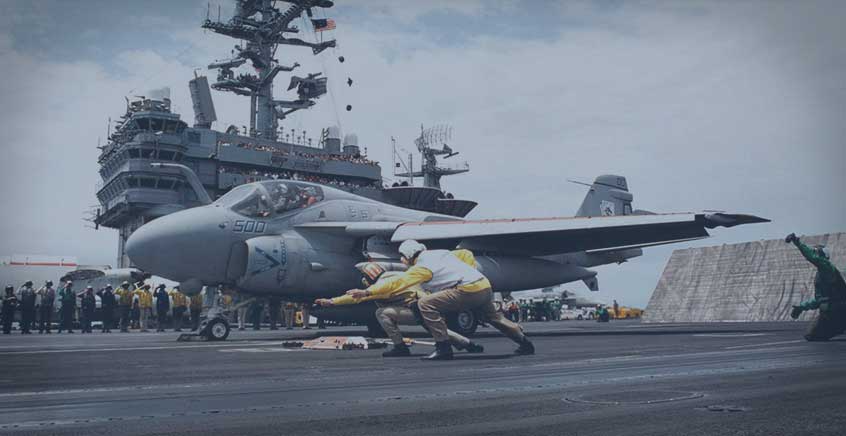VA-35 BLACK PANTHERS


Proud of its origins and mission, the squadron adopted the Black Panther as its insignia, a mascot which embodied the characteristics of the bombing squadron: stealthiness, diving, strength, tactics, and decisiveness.
Command History
Attack Squadron THIRTY-FIVE was established in ceremonies at NAS Norfolk on 1 July 1934 and at the time of its disestablishment in 1995 was the Navy’s oldest attack squadron.
Through 60 colorful years of naval carrier aviation the Black Panthers saw many changes. They saw action on 28 U.S. and one British carrier, ranging from the old straight wooden decks of the USS RANGER (CV 4) to the steel decks of the nuclear-powered supercarrier, USS THEODORE ROOSEVELT (CVN 71). Originally designated VB-3B, the Black Panthers deployed aboard USS RANGER (CV 4) flying the fabric covered Great Lakes BG-1 biplane. During the next 60 years the squadron would fly the SB2U-2 Vindicator, SBC-4 Helldiver, two 2 versions of the SBD Dauntless, 4 versions of he SB2C Helldiver, 2 AD Skyraider models and 7 A-6 variants.
Truly pioneers of carrier aviation, the Black Panthers were the only ship-based squadron to deploy with the BG-1. Justifiably proud of their history, the Black Panthers of Attack Squadron THIRTY-FIVE were pacesetters throughout the history of naval aviation. In 1959 , the squadron became the first double winner of the coveted Atlantic Fleet Battle “E” and the CNO Aviation Safety “S” awards, a feat which was repeated in 1972 and again in 1977. VA-35 also received the Safety “S” award in 1973, 1975 and most recently in 1987. The squadron again won the Battle “E” in 1979 and three more times during the nineteen eighties. In addition, the squadron won the Hughes Trophy for two consecutive years, the 1983 and 1985 Intruder Bombing Derby, the coveted Admiral C. Wade McClusky Trophy as the most outstanding attack squadron in the United States Navy for 1983, and most recently in 1994 won both the Pratt & Whitney Trophy and the Grumman Golden Wrench Award.
Whenever and wherever the United States found itself in conflict, the Black Panthers of Attack Squadron THIRTY-FIVE were there. In 1942, while aboard USS ENTERPRISE (CV 6) they served as part of the escort group for Doolittle’s famous B-25C bombing raid against Tokyo, launched from USS HORNET (CV 8).
At the Battle of Midway the Black Panthers suffered the personal loss of their home, USS YORKTOWN (CV 5), but squadron pilots were meanwhile responsible for leading devastating attacks against the Japanese carriers AKAGI and HIRYU. During the war in the Pacific, the squadron also saw action at Guadalcanal, Coral Sea, the Russell Islands, Leyte, Eastern Solomons, Luzon, Mindoro, Formosa, Hong Kong, Saigon, the South China Sea, the China Coast, Nansei Shoto, Iwo Jima, and led attacks against the Japanese mainland.
During the Korean Conflict, the squadron flew Douglas A-1 Skyraiders against enemy targets and later pioneered the operational use of inflight refueling. In July of 1958, VA-35 flew over 1,300 hours in support of American troops in Lebanon. In the Fall of 1962 the Black Panthers flew in defense of Guantanamo Bay, Cuba during the Cuban Missile Crisis.
In September 1965, the Black Panthers received their first Grumman A-6A Intruder, an aircraft that was destined to become the workhorse during the Vietnam conflict. With its highly sophisticated ground-mapping radar and computerized weapons systems, the A-6 was able to deliver its ordnance against significant North Vietnamese targets in all weather conditions, and in 1967, made history when, for the first time by jet aircraft, mines were laid in North Vietnamese rivers. VA-35 aircrews saw action on four Western Pacific combat deployments during the years 1966 through January 1973, when VA-35 participated in the last air strike in South Vietnam, attacking North Vietnamese forces near the DMZ. In 1968, while deployed onboard USS ENTERPRISE (CVN 65) enroute to the Gulf of Tonkin VA-35 and her air group responded to the PUEBLO crisis in the Sea of Japan.
In 1980, the Black Panthers became the first operational A-6 squadron to deploy with the forward looking infrared receiver and laser equipped A-6E TRAM aircraft. Responding to the hostage crisis in Iran, the squadron left the Mediterranean for the Indian Ocean onboard USS NIMITZ (CVN-68) in January 1980 where it spent 144 continuous days at sea.
The Black Panthers concluded a highly successful Mediterranean deployment in 1987 and ended a 12-year association with USS NIMITZ (CVN 68). In 1989, the Navy’s oldest Attack Squadron joined the Navy’s newest nuclear-powered aircraft carrier, USS THEODORE ROOSEVELT (CVN 71), for its maiden Mediterranean deployment. Also in 1989 the Black Panthers began the real-world employment of the latest night attack technology: Night Vision Devices. Used in conjunction with the A-6E SWIP’s already impressive night attack capabilities, the NVDs allowed unprecedented stealth and tactical maneuverability.
In August 1990 the squadron deployed once more for what promised to be a relatively easy summer Med cruise. Operation Desert Shield/Storm put an end to that idea quickly. The men of VA-35 would set many Navy firsts before their eight month combat cruise ended. Flying from the deck of USS SARATOGA (CV 60), the squadron was the first Navy squadron to drop bombs on Iraqi targets, the first to use Night Vision Devices in combat (over 300 combat hours with NVDs), and the first fleet squadron to drop high altitude Rockeyes, Gators, and DSTs (destructors) on Iraqi targets. Additionally, the Black Panthers flew nearly 400 strike sorties (all over 5 hours duration) and expended over 1.7 million pounds of ordnance.
In 1992 VA-35 completed another Mediterranean deployment aboard USS SARATOGA (CV 60), during which the squadron participated in several multi-national exercises which allowed the Black Panthers the opportunities to train over unfamiliar territory against foreign forces. The squadron flew low levels over France, Spain, Italy, and Turkey.
1994 found the Black Panthers once again aboard USS SARATOGA at sea in the Mediterranean and Adriatic, where VA-35 and CARRIER AIR WING 17 helped protect UN peacekeepers in Bosnia-Hersegovina, as well as engaging in exercises with several of our allies. Using their upgraded A-6E SWIP jets, the Black Panthers were capable of employing the latest weapons in the Navy’s arsenal, including Harpoon, Laser and Infrared Maverick, Sidewinder, Walleye, Shrike, HARM (High speed Anti-Radiation Missile), and SLAM (Stand-off Land Attack Missile) in addition to the Navy’s new GBU-24 hard-target penetrator, Laser Guided Bombs, cluster munitions, mines, destructors, and Mk-80 series iron bombs. This proved to be an especially historic cruise for VA-35 as it was both the last cruise of USS SARATOGA before her decommissioning, and the Black Panthers last cruise flying the venerable A-6 Intruder. On January 31, 1995 VA-35 was disestablished after 60 plus years of continuous service.

There have been a total of 30 Commanding Officers of The Black
Panthers. The first served from September 1965 to October 1966.
The last was CDR J.S. Godlewski. He served from 3 September 93 to 31 January
95.


